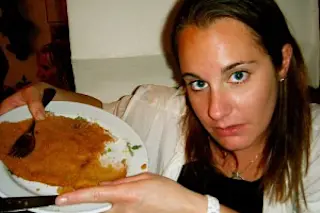Photo: flickr/Sarah AckermanThis paper really needs no introduction. We love these Argentinian scientists for their dedication to meat. Way to optimize the schnitzel experience!How thick do consumers' want their meat and how thick do they get it? The case of deep-fried breaded beef. The main objective was to estimate the optimum thickness of meat from a consumers' perspective. Breaded beef (known as "milanesa" in Spanish speaking countries and as "schnitzels" in Austria) is a food product prepared with a slice of meat that is dipped in beaten egg to then be covered in bread crumbs; thus prepared it is fried. This product was used as a case study. Breaded beef was evaluated in three different stages: raw slice of meat, appearance of meat after frying, and during mastication. Breaded beef prepared with meat of varying thicknesses were presented to consumers who evaluated if the thicknesses were too thin, ok or ...
What is the optimum thickness of meat?
Discover the optimum thickness of meat for deep-fried breaded beef, enhancing your milanesa schnitzel experience.
More on Discover
Stay Curious
SubscribeTo The Magazine
Save up to 40% off the cover price when you subscribe to Discover magazine.
Subscribe













